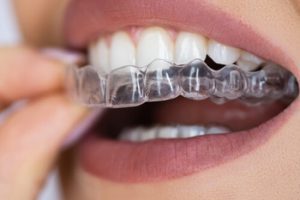If you’re considering straightening your teeth with Invisalign, you’re likely curious about the cost. Invisalign has become popular for people seeking a discreet, effective alternative to traditional braces. With virtually invisible aligners and a customisable treatment plan, it’s no wonder so many are drawn to this innovative orthodontic treatment. But how much does Invisalign cost in Australia, and what factors influence the price? Let’s explore the costs, treatment options, and other considerations to help you decide if Invisalign is worth it for you.
What Makes Invisalign Different?
Before we dive into the costs, it’s important to understand what sets Invisalign apart from traditional braces and other orthodontic treatments. Invisalign aligners are fabricated from clear, BPA-free plastic, making them a virtually invisible option for teeth straightening. Unlike traditional metal braces with stainless steel brackets, Invisalign uses removable aligners to gradually shift your teeth into their desired position.
Why Invisalign Is a Game-Changer in Orthodontics

Invisalign stands out in the world of orthodontic treatments because of its innovative approach to teeth straightening. While traditional metal braces and other orthodontic devices have been the go-to solutions for decades, Invisalign offers a fresh, patient-friendly alternative. Here’s why Invisalign has revolutionised orthodontics:
- Enhanced Flexibility: Unlike traditional braces, Invisalign aligners are removable, enabling you to eat, brush, and floss with ease and without any obstruction.
- Low Maintenance: The aligners require minimal upkeep compared to braces requiring regular adjustments and wire tightening.
- Predictable Results: Invisalign treatments are mapped out using advanced 3D imaging, giving you a clear picture of your progress and expected outcomes.
How Much Does Invisalign Treatment Cost in Australia?
The starting price for Invisalign in Australia depends on factors such as the complexity of your case, treatment length, and your provider’s fees. Here’s a breakdown of what you can expect for different levels of treatment:
Minor Adjustments or Mild Cases
- Starting Price: AUD 3,000
- Duration: 6–12 months
- Ideal For: Minor crowding, spacing issues, or bite corrections.
Moderate Cases
- Starting Price: AUD 5,000
- Duration: 12–18 months
- Ideal For: Moderate misalignments or bite issues that require additional aligner adjustments.
Severe Misalignments
- Starting Price: AUD 8,000
- Duration: 18–24 months
- Ideal For: Complex cases involving severe crooked teeth or bite corrections.
Comparing Invisalign Costs to Other Options
When considering Invisalign, it’s helpful to conduct a dental braces cost comparison against alternative teeth straightening treatments:
Traditional Metal Braces
- Starting Price: AUD 6,000
- Overview: Effective but highly visible due to metal brackets and wires.
Lingual Braces
- Starting Price: AUD 8,000
- Overview: These braces are attached behind the teeth, making them virtually invisible, but they are typically more expensive than Invisalign.
White or Clear Ceramic Braces
- Starting Price: AUD 6,500
- Overview: Less noticeable than metal braces but not as discreet as Invisalign aligners.
Online Aligner Companies
- Starting Price: AUD 2,000
- Overview: A cheaper alternative, but they lack the personalised care and expertise of Australian licensed dentists, which can compromise the effectiveness of treatment.
Hidden Costs to Keep in Mind
While the initial quote you received for Invisalign covers most of the treatment, there are potential additional costs to consider:
Retainers Post-Treatment
To keep your newly straightened teeth in place, you’ll need to wear retainers.
- Starting Price: $300 AUD per set
- Retainers are important to prevent your teeth from moving back to their original positions.
Replacement Aligners
If aligners are lost or damaged during treatment, replacements will be necessary.
- Starting Price: $150 AUD per aligner tray
- Staying on schedule with replacements ensures your treatment isn’t delayed.
Emergency Consultations
Occasionally, unplanned visits to the dentist may be required for adjustments or other issues.
- Starting Price: Varies depending on the dentist and nature of the issue
- These visits can address fit problems or discomfort to keep your treatment on track.
What Is Included in the Cost of Invisalign?
When you invest in Invisalign, your treatment typically includes:
Initial Consultation
- Like in any teeth straightening treatment, your dentist will carefully assess your teeth and discuss your goals first.
Custom Treatment Plan
- Using advanced 3D imaging technology, a personalised treatment plan is created to guide your teeth’s gradual movement.
Aligner Trays
- You’ll receive multiple sets of aligners, which you’ll switch out every 1–2 weeks as directed.
Regular Check-ups
- Periodic visits to your provider ensure your treatment is progressing as planned.
Final Refinements
- Some cases may require additional aligners at the end of treatment to perfect your smile.
What Influences the Cost of Invisalign?
Several factors can affect the overall Invisalign cost:
Complexity of Your Case
- More complex issues, such as severe misalignments or bite corrections, require additional aligner trays and a longer treatment plan, increasing the cost.
Treatment Duration
- The longer your Invisalign treatment, the higher the cost. Shorter treatments for mild cases will naturally cost less.
Dentist Fees
- Fees can vary based on the expertise and location of your provider. Australian licensed dentists with extensive experience in Invisalign treatments may charge more.
Health Insurance Coverage
- Many private health insurance plans offer orthodontic coverage, which can reduce your out-of-pocket expenses. Check your policy’s lifetime limits, waiting period, and orthodontic benefits to see how much Invisalign costs you can claim.
Payment Options and Flexible Plans
Invisalign payment plans are often available to help make the treatment more affordable. Many dental clinics in Australia offer flexible payment plans, allowing you to pay in instalments over the course of your treatment. Additionally, switching health insurers might help you access better orthodontic coverage if your current policy lacks sufficient benefits.
Is Invisalign Worth the Cost?
People generally assume that Invisalign treatments are more expensive than other orthodontic options, but the benefits often justify the price:
- Aesthetics: Invisalign aligners are virtually invisible, offering a discreet option for straightening teeth.
- Comfort: The smooth plastic design of the aligners provides greater comfort compared to traditional metal brackets and wires.
- Convenience: Removable aligners make it easier to maintain oral hygiene and enjoy your favourite foods.
- Customisation: Invisalign provides a personalised treatment plan tailored to your unique needs.
- Improved Oral Health: Straightened teeth are easier to clean, minimising the risk of gum disease and tooth decay.
- Boosted Confidence: A straighter smile can enhance your self-esteem and overall appearance.
- Future Savings: Addressing alignment issues early can prevent costly dental treatments down the road, such as bite corrections or TMJ therapy.
Can Invisalign Treat All Types of Misalignments?
Invisalign is versatile enough to address a wide range of dental issues, but its suitability depends on the severity of your case. Here’s a closer look at what Invisalign can treat:
Mild Crowding or Spacing Issues
- Perfect for minor adjustments to align teeth and close small gaps.
Moderate Misalignments
- Invisalign is effective for moderate cases, including uneven spacing and mild bite corrections.
Complex Cases
- Severe misalignments or bite issues might still require traditional braces or a combination of Invisalign and other orthodontic tools.
If your case involves significant structural corrections, your dentist may recommend alternatives like traditional braces, lingual braces, or hybrid treatment plans combining multiple approaches.
The Role of Health Insurance in Invisalign Costs
Private health insurance can significantly reduce your out-of-pocket costs for Invisalign. However, it’s essential to check the specifics of your policy:
- Orthodontic Coverage: Ensure your policy includes benefits for major dental procedures like Invisalign.
- Lifetime Limits: Many health insurers have a cap on the amount they’ll reimburse for orthodontic treatments.
- Waiting Periods: Some policies require a waiting period before you can claim benefits, so plan accordingly.
If your current policy isn’t sufficient, you might consider switching health insurers to access better orthodontic coverage.
Step-by-Step Invisalign Treatment Journey
Embarking on an Invisalign journey is an exciting step toward achieving a straighter, more confident smile. From the initial consultation to wearing your final retainers, every stage is designed to ensure your teeth are aligned comfortably and effectively. From the first consultation to a perfectly straight smile, here’s what you can expect during your Invisalign journey:
Initial Consultation
Your journey begins with an initial consultation with a licensed dentist. During this visit:
- Your dentist assesses your teeth, bite, and alignment issues.
- They discuss your goals and explain whether Invisalign is the right solution for you.
- 3D imaging or impressions are taken to create a detailed map of your teeth.
Personalised Treatment Plan
Using advanced 3D technology, your dentist creates a customised treatment plan:
- The digital model predicts how your teeth will move during each phase.
- You’ll get an estimated timeline for your treatment, which can range from a few months to over two years.
- Your aligners are then custom-made to fit your teeth precisely.
Receiving Your Aligners
Once ready, you’ll get your first set of aligners:
- Your dentist gives instructions on how to wear and care for them.
- Aligners are typically changed every 1–2 weeks to gradually shift your teeth.
Regular Adjustments and Check-ups
You’ll visit your dentist regularly, every 6–8 weeks for check-ups:
- These appointments guarantee that your treatment is progressing as planned.
- Your dentist may adjust your treatment plan or provide additional aligners if needed.
Final Results and Retainers
After completing your aligner series:
- You’ll wear retainers to maintain your results. Retainers are usually worn full-time initially, then gradually transitioned to nighttime use.
- Your dentist will guide you on the long-term care needed to preserve your new smile.
Tips for Maintaining Your Aligners
Proper care is essential to keep your aligners in great shape and ensure successful treatment. Here are some tips:
Daily Cleaning Routine:
- Rinse Your Aligners: Always rinse with lukewarm water before putting them back in.
- Use a Soft Brush: Gently brush your aligners with clear antibacterial soap or aligner cleaner. Avoid using toothpaste, as it may cause scratches on the plastic surface.
- Soak Regularly: Soak aligners in Invisalign cleaning crystals or a retainer cleaning solution to keep them clear and odour-free.
Dos and Don’ts:
- Do: Brush your teeth before reinserting aligners to avoid trapping bacteria.
- Don’t Eat or drink anything other than water while wearing aligners. Sugary beverages can stain them and cause decay.
- Do: Store aligners in their case when not in use to prevent damage or loss.
- Don’t: Expose aligners to hot water, which can warp the plastic.
Common Mistakes to Avoid:
- Leaving aligners on countertops where they can collect bacteria.
- Forgetting to wear them for the recommended 20–22 hours per day.
- Cleaning aligners with abrasive materials that cause damage to their transparency.
Common Myths About Invisalign
Despite its popularity, misconceptions about Invisalign persist. Let’s clear up a few:
“Invisalign doesn’t work for severe cases.”
- Invisalign can manage a wide range of issues, from mild crowding to complex misalignments, as long as the patient follows the prescribed treatment. For extreme cases, a combination of Invisalign and other orthodontic tools may be used.
“Aligners are uncomfortable.”
- While some initial discomfort is normal as your teeth begin to shift, Invisalign aligners offer greater comfort compared to traditional braces, thanks to their smooth plastic construction.
“Invisalign is slower than braces.”
- Treatment time differs according to the complexity of your case. For many, Invisalign is comparable in speed to traditional braces, with the added benefit of flexibility and convenience.
What Happens If You Don’t Wear Invisalign As Directed?
Wearing Invisalign aligners as recommended for 20–22 hours each day is crucial. Here’s what happens if you don’t stick to the plan:
Consequences of Non-Compliance:
- Delayed Progress: Skipping wear time can slow down tooth movement, extending your treatment timeline.
- Ill-Fitting Aligners: Teeth can shift unpredictably, making future aligners difficult to fit properly.
- Compromised Results: Inconsistent wear may lead to suboptimal results, requiring additional adjustments or aligners.
Staying on Track:
- Set reminders to put your aligners back in after eating or brushing.
- Commit to wearing them as directed to ensure you achieve your desired results.
FAQs About Invisalign
Here are answers to some of the most common questions patients ask about Invisalign:
Can I Eat with Invisalign Aligners In?
No, you should always remove aligners before eating or drinking anything besides water. This prevents staining and damage to the aligners.
What Happens If I Lose an Aligner?
Contact your dentist immediately. They may advise you to use a previous set or move to the next set of aligners while a replacement is ordered.
Do Aligners Hurt?
You may feel mild discomfort when switching to a new aligner, but this typically subsides within a few days.
Can Invisalign Fix All Orthodontic Issues?
While Invisalign can treat most cases of crooked teeth and misalignments, extremely complex cases may require traditional braces or additional treatments.
How Long Does Invisalign Treatment Take?
Treatment duration depends on the complexity of your case but typically ranges from 6 months to 2 years.
Final Thoughts: Is Invisalign Right for You?

For an accurate quote and treatment plan, book an initial consultation with an Australian licensed dentist. They’ll evaluate your teeth, discuss the potential costs involved, and help you decide if Invisalign is the right choice for you.
For Invisalign treatments tailored to your needs, contact Carindale Family Dentist at:
Millennium Centre : (07) 3324 9172
Metropol 2 Centre : (07) 3324 9104.
Start your journey toward a confident, beautiful smile!
References:
Healthline. (n.d.). Does Invisalign work? Retrieved from https://www.healthline.com/health/does-invisalign-work
WebMD. (n.d.). Invisible orthodontic aligners. Retrieved from https://www.webmd.com/oral-health/invisible-orthodontic-aligners
Invisalign. (n.d.). Retainers after Invisalign. Retrieved from https://www.invisalign.com/resources/retainers/retainers-after-invisalign
Medical News Today. (n.d.). Metal braces: Uses, costs, benefits, and more. Retrieved from https://www.medicalnewstoday.com/articles/metal-braces-uses-costs-benefits-and-more-2
Cleveland Clinic. (n.d.). Gum (periodontal) disease. Retrieved from https://my.clevelandclinic.org/health/diseases/21482-gum-periodontal-disease
Colgate. (n.d.). How to practice oral hygiene with braces. Retrieved from https://www.colgate.com/en-us/oral-health/kids-oral-care/how-to-practice-oral-hygiene-with-braces




